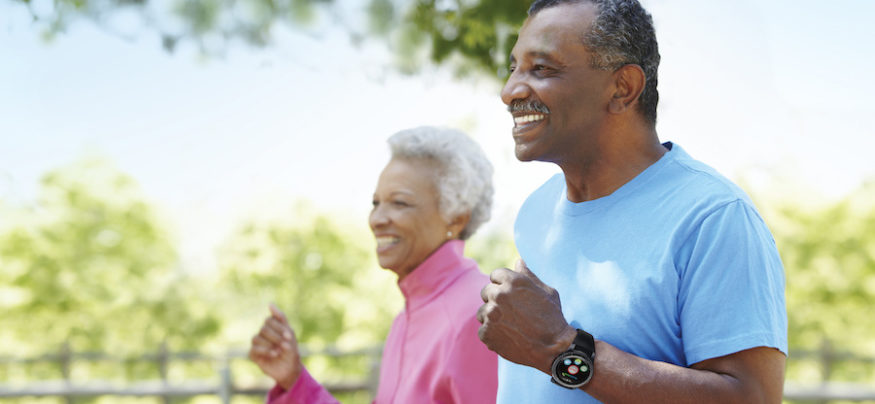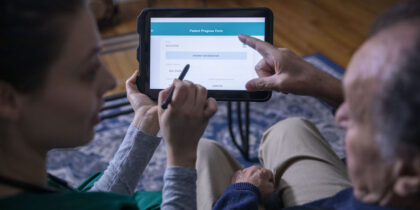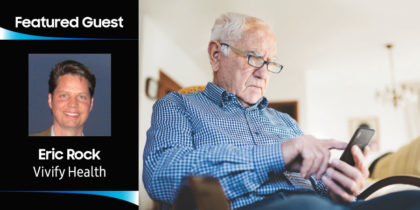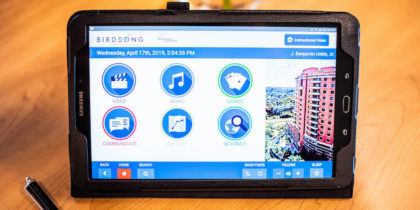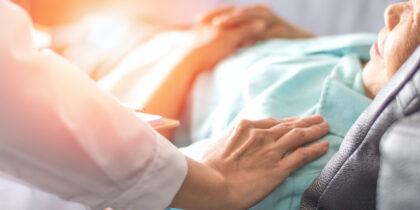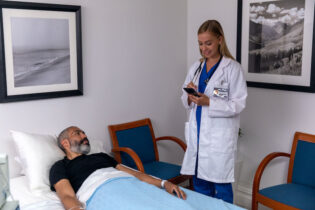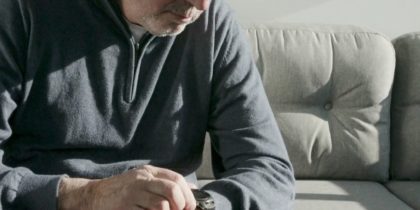The MobileHelp story began more than a decade ago, with two innovative thinkers and two big goals: to create the first mobile Personal Emergency Response Systems (mPERS), and to remove the stigma associated with medical alarms. Changing the PERS market only took a couple of years and a great IoT enablement partner, but changing perceptions proved more difficult.
“Ten years ago, medical alarms were just in-home landline boxes with buttons,” says Robert Flippo, CEO of MobileHelp. “We introduced a device that looks like an old pager with one button you can push to get help anywhere there is cellular network coverage. Still, people associate our entire industry with the ‘Help, I’ve fallen and I can’t get up’ commercials and the lady with the walker at the bottom of the stairs. We’ve been trying to change that perception for years. It’s not about being old and frail. It’s about being protected in the event of an unknown emergency. That stigma is the number one reason that people don’t become medical alarm customers.”
What does it take to convince seniors that a PERS isn’t an embarrassing sign of weakness? Put the same great solution on a device their grandkids would wear. Then, launch a similar product for those grandkids — all on a Samsung Gear S3.
Smart Solution, Smartwatch
The new MobileHelp Smart solution works similarly to every other product the company offers. Users can press one button to summon help from a MobileHelp operator. The operator knows the user’s exact GPS location — information 911 doesn’t have — and important medical information that paramedics need to know.
The concept is simple, but the cellular technology behind it is not. To ensure the solution will work across various cellular carriers, each device (and the PERS software inside it) must be certified for each network. This process is time-consuming, complex and expensive, especially for startups. That’s why MobileHelp chose early on to partner with KORE Wireless, an IoT enablement firm with the expertise and business connections to get the product off the ground quickly. When MobileHelp decided to launch a wearable solution, leaders again tapped KORE for help with device selection and certification.
How Mobile Solutions Improve Patient Experience
Get your free guide to enhancing the patient experience with mobile technology. Download Now
“What MobileHelp is doing is really on the leading-edge,” says Sue Holub, chief marketing officer at KORE Wireless. “When you think about consumer cell connections for smartwatches, they’re too expensive with the number of devices deployed in a PERS scenario. One of the things KORE and MobileHelp have done is work together to enable ongoing connectivity for this device. Given we are talking about a life-saving device, it has to be always on and reliable in a variety of different conditions and locations. And it’s hard to provide cellular connectivity for a wearable like that at a reasonable rate, especially for smaller companies.”
Creating a Customized User Experience
It was also important to create the right user experience on the wearable device and put the PERS functionality within easy reach. MobileHelp wanted the user interface to remain simple, with one button to push in case of emergency, and needed to lock down the device to prevent users from downloading apps that might interfere with the life-saving technology.
Flippo says that’s why MobileHelp chose Samsung Gear S3 smartwatches, with Samsung Knox providing defense-grade security and device customization.
“Using Samsung Knox, we can put the device in kiosk mode with our interface and a specific set of functionality that we dictate. This development framework is a pretty unique capability that Samsung makes available to IoT companies like ours. If you look at the screen on the smartwatch, it’s a MobileHelp-enabled platform. There were quite a few things that had to be done to make the solution work, and because it is a life-safety product, perform as flawlessly as possible every single time — and together Samsung and KORE worked closely with us to make that happen.”
MobileHelp Smart also includes the Samsung Health app, which leverages smartwatch sensors to let users track their heart rate, sleep, steps and other health data.
What a Difference a Wearable Makes
Approximately 3.36 million U.S. consumers used PERS solutions in 2017, according to Parks Associates, which expects that number to top 6 million by 2021, thanks in large part to smartphone- and wearable-based solutions like MobileHelp Smart.
“I’m the CEO of a major medical alarm company, and my dad has never been interested in any product we’ve developed,” says Flippo. “This device is the first one he’s actually asked about, which is a pretty big movement in my opinion.”
Flippo says MobileHelp Smart is particularly appealing to men. The general population of medical alarm customers is about 70 percent female, but 50 percent of MobileHelp Smart customers are male.
Case in point: MobileHelp recently supplied smartwatches for the Wounded Warrior Project’s Soldier Ride Across America. “These guys were out training all the time, often alone, and they were thrilled to have a device that could serve as a training tool — because it does have the activity monitoring and heart rate monitor — and enable them to summon help in an emergency. They knew it was a personal emergency response device but never emotionally attached it to the ‘Help, I’ve fallen and I can’t get up’ lady.”
The new form factor has created other opportunities for MobileHelp, beyond connected care for seniors.
“We’ve been asked about products for campus management and lone worker security for years, but the form factor and functionality of our products just weren’t well-suited for those markets. This smartwatch-based device lends itself to a number of markets. All of our other products have really served only one purpose — to connect you with life-saving help in case of emergency. This device does that, but it also includes an entire suite of Samsung Health apps. Using Knox customization tools, we can also add other apps or unlock other functionality that would make the product more useful for these new markets.”
On average, MobileHelp responds to more than 2,700 requests for help each day and dispatches emergency responders every four minutes. By putting their solutions in more hands (or rather, on more wrists), MobileHelp is literally saving lives — all thanks to five guys with a big idea and a mind for mobile innovation.
Learn more about how mobile technology is improving the quality of patient care in our free white paper.
